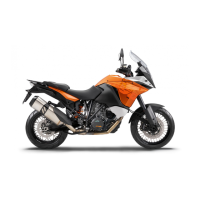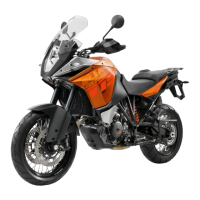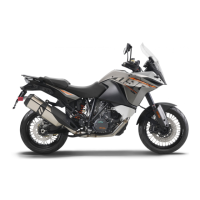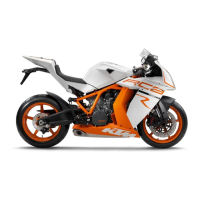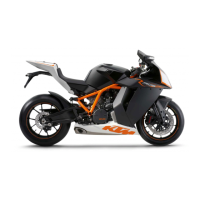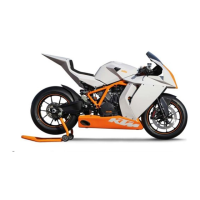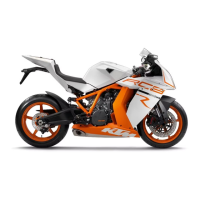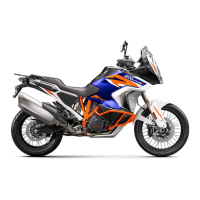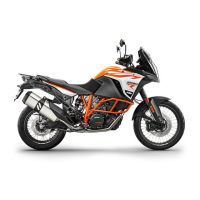
Do you have a question about the KTM 1190 ADVENTURE R and is the answer not in the manual?
| Engine Type | 2-cylinder, 4-stroke, V 75° |
|---|---|
| Displacement | 1195 cc |
| Bore x Stroke | 105 mm x 69 mm |
| Transmission | 6-speed |
| Fuel Capacity | 23 liters |
| Dry Weight | 217 kg |
| Front Suspension | WP USD Ø 48 mm |
| Wheelbase | 1560 mm |
| Compression Ratio | 12.5:1 |
| Starter | Electric starter |
| Cooling | Liquid cooled |
| Lubrication | Forced oil lubrication with 3 oil pumps |
| Primary Drive | 40:76 |
| Frame | Chromium-Molybdenum steel trellis frame, powder coated |
| Suspension Travel Front | 220 mm |
| Suspension Travel Rear | 220 mm |
| Ground Clearance | 250 mm |
| Power | 110 kW (150 hp) |
| Torque | 125 Nm |
| Front Brake | 2 x Brembo four-piston, radially mounted caliper, brake disc Ø 320 mm |
| Rear Brake | Brembo 2-piston caliper, 267 mm disc |
| ABS | Bosch 9ME Combined-ABS |
| Seat Height | 890 mm (35 in) |
| Final Drive | Chain |
| Clutch | PASC (Power Assisted Slipper Clutch), hydraulically operated |
Explains danger, warning, caution, and note symbols for safety.
Location and identification of critical vehicle serial numbers.
Locating the key number for spare key ordering.
Describes clutch, brake levers, throttle grip, and switches on left handlebar.
Details the functions of the left handlebar combination switch.
Explains the combination instrument layout and startup sequence.
Details the functions and information shown on the matrix and segment displays.
Explains the meaning and function of various indicator lamps.
Guides on adjusting handlebar position and windshield height for rider comfort.
Instructions for adjusting clutch and brake levers to fit the rider.
Essential steps for initial motorcycle operation and engine break-in.
Safety and handling advice for loading the motorcycle with luggage.
Outlines checks before riding and the correct method for starting the engine.
Covers gear shifting, speed adaptation, and braking techniques.
Lists mandatory service intervals and tasks for the motorcycle.
Suggests additional service intervals and tasks for optimal motorcycle care.
Instructions for adjusting fork compression, rebound, and spring preload.
Guides on adjusting shock absorber compression and rebound damping.
Covers checking chain dirt, cleaning, tensioning, and wear inspection.
Details the procedure for checking and adjusting steering head bearing play.
Explains how the ABS system works, its modes, and potential functional limits.
Procedures for inspecting brake discs for wear and checking brake fluid levels.
Step-by-step guide for removing and installing front and rear wheels.
Instructions for inspecting tire tread depth, condition, age, and air pressure.
Covers removing, installing, and recharging the motorcycle battery.
Explains how to access and change fuses in the fuse box and the main fuse.
Explains how to select different engine and traction control modes for riding.
Details the function and control of the Motorcycle Traction Control system.
Covers checking, adding, and changing engine oil and filter for optimal performance.
Provides detailed technical specifications for the motorcycle's engine.
Lists capacities for fluids and key chassis dimensions and components.
Specifies required brake fluids and coolants for maintenance.
Details the recommended engine oil types and standards for the motorcycle.

